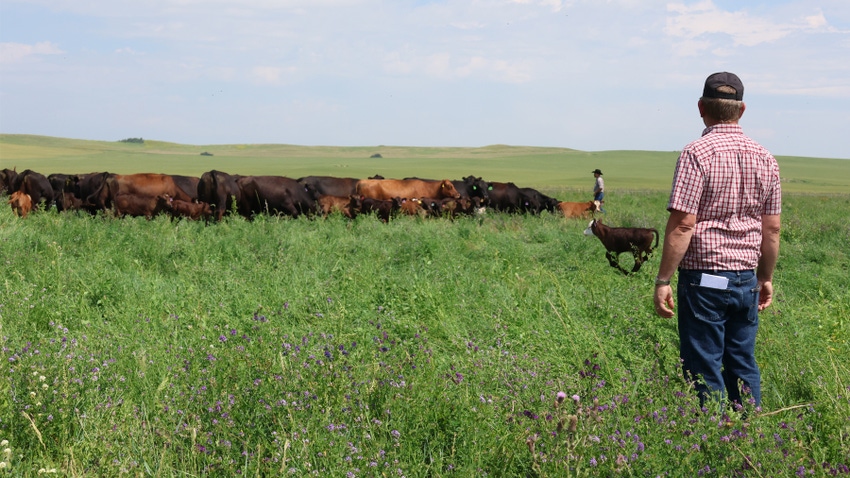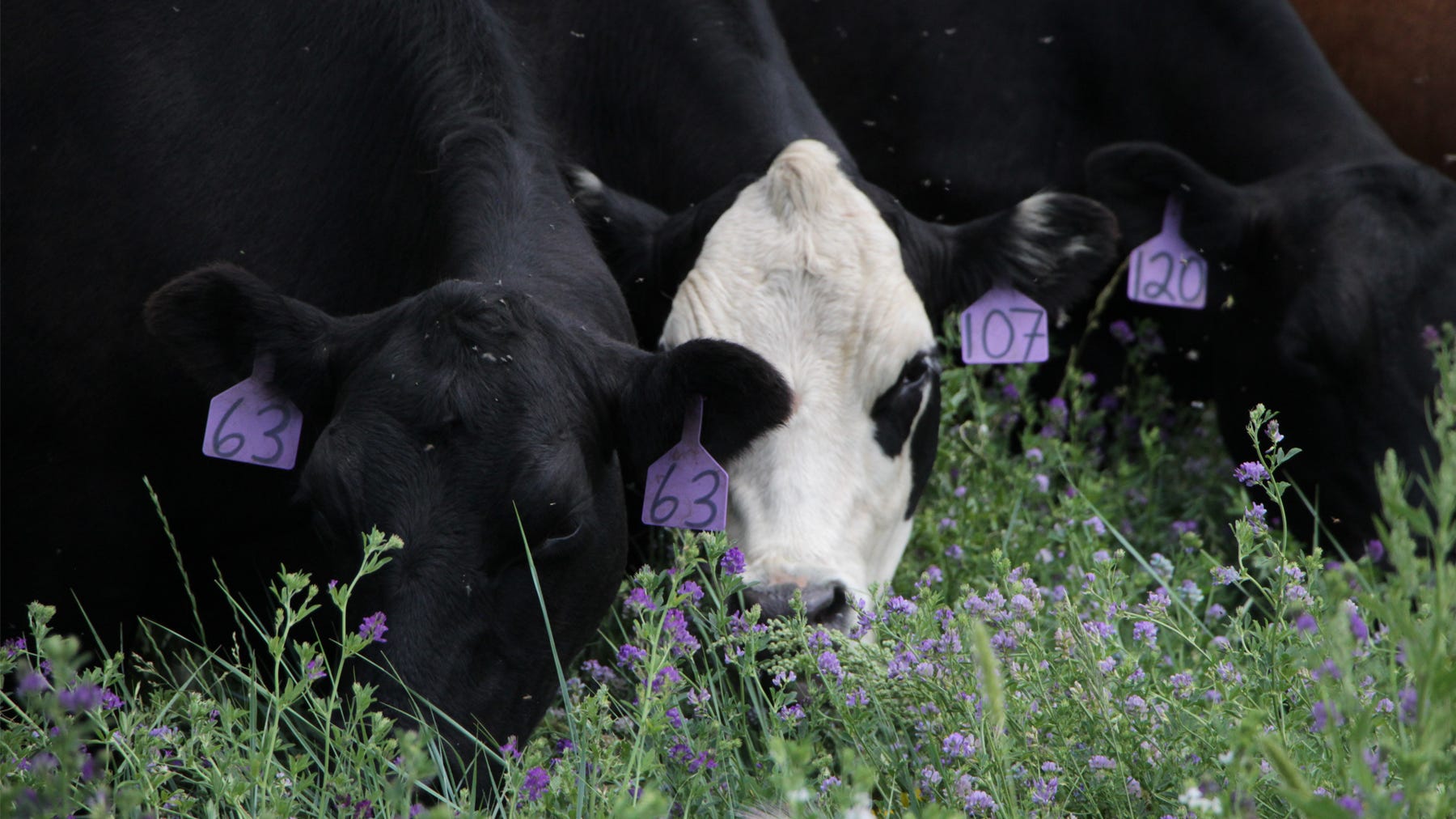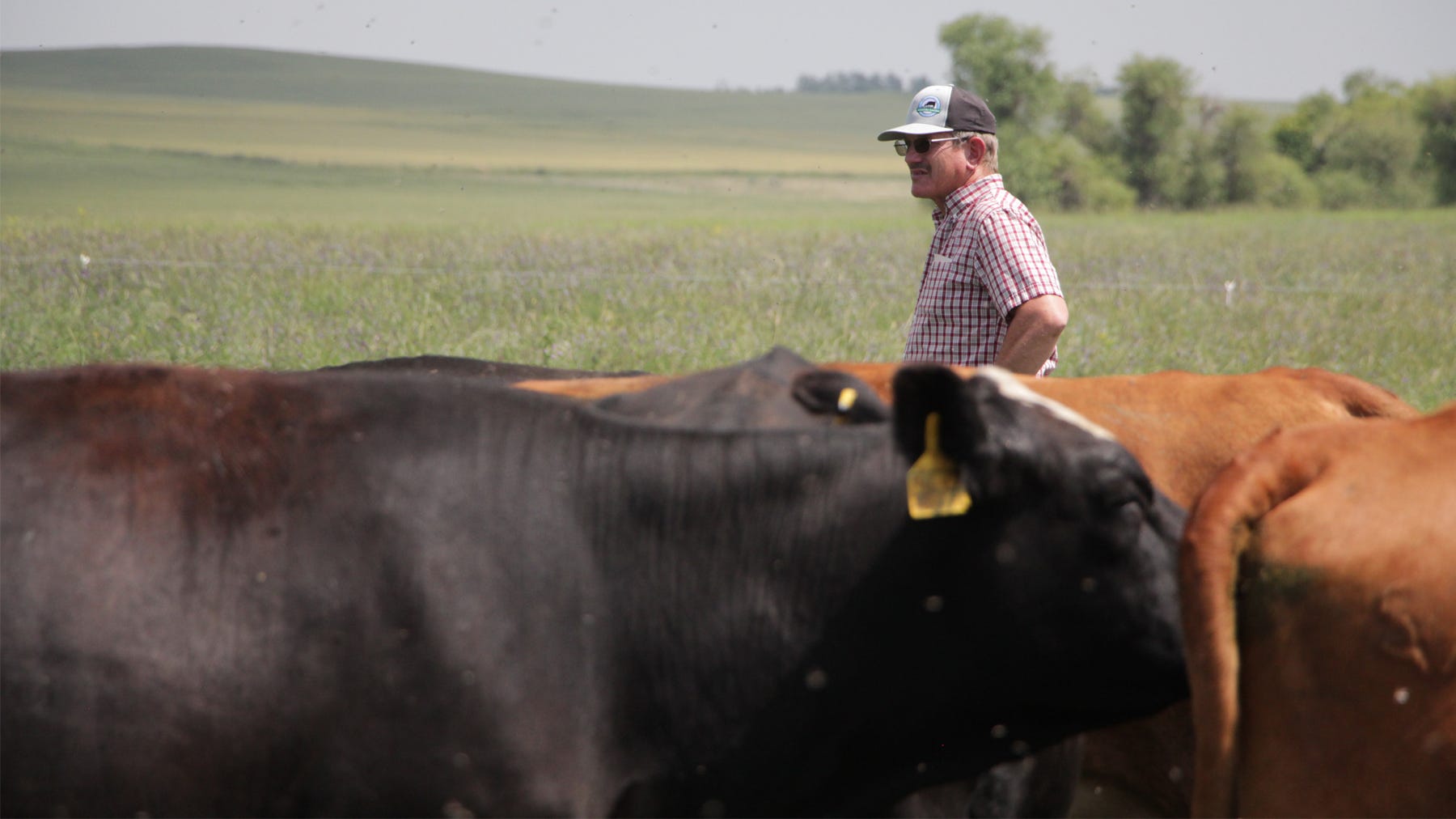
Moving from conventional to regenerative ranching is a process — one that 2022’s Leopold Conservation Award winner started roughly 20 years ago.
The Leopold Conservation Award recognizes agricultural landowners who are committed to excellence and conservation. The North Dakota winner for 2022 was Spring Valley Cattle, operated by Lance and Anissa Gartner of Glen Ullin.
“It’s a confirmation that the steps we’ve taken have been right,” Lance Gartner said of receiving the award. “Not only are we seeing the benefits of what we’re doing on our land, but we know that other people agree, and this is the direction we need to be moving towards for ourselves and others.”
The North Dakota Leopold Conservation Award partners include:
North Dakota Grazing Lands Coalition, ND
North Dakota Association of Soil Conservation Districts
North Dakota Stockmen’s Association
These partners hosted the conservation award tour on July 18, where attendees heard from the Gartners about their ranch and management practices.
Conservation-minded
The Gartners have been ranching since the early 1990s, slowly transitioning to regenerative agriculture.
“We came from strictly conventional farming and ranching. There’s so much to learn,” Lance Gartner said. “We have a way still to go with management of the grass and land, taking care of the resources and being a good steward of what God’s given us to take care of.”
Following in his father’s footsteps, the operation was home to tillage and season-long grazing, and Gartner said they learned from his dad and did everything the way it was always done. But when his father suffered a heart attack in 2000, they began trying conservation practices.
“We had all this work to do to support two families, so we worked hard for three years and found our first holistic management course in 2004,” he said. “We knew this was the direction we needed to go, and it’s been growing ever since.”
The first practices they incorporated after attending the course in Buffalo, S.D., was cross-fencing and rotational grazing. “We’ve gone from 14 pastures when we started this to 88 pastures right now,” Gartner said.
They also moved from permanent cross fencing to poly-wire fencing, making adjustments as needed.

FORAGE FOCUS: Cattle are moved among 88 pens at Spring Valley Cattle. Careful attention is paid to stocking rates and forage health. Here, cattle graze an all-alfalfa pen.
Their holistic ranch is home to commercial cattle, split between hay and grazing acres. They purchased their first grass-genetics bull in 2004, and the process of improving cattle for their operation has been ongoing ever since.
The ‘Solo cup’ cow
“We look more about the structure of the animal, and what’s going to work with grass-based genetics,” Gartner said.

SOLO CUP: Lance Gartner said their ideal animal is one that can thrive on their all-forage feeding style. The operation finds the ideal body structure follows the shape of a red Solo cup.
Steve Campbell of Tailor Made Cattle said during the tour that a “red Solo cup cow” is the ideal animal for all-forage operations. This cow is one with a big belly and wide butt that slopes from hooks to pins. It sheds early in the season, and its last rib is angled between the hock and ankle. The Gartners follow this philosophy to get the most profitability and fertility on their operation.
“We haven’t fed grain to a cow here since 2006, so these animals have to be able to survive on forage,” Gartner said. “I want to see a lot of gut capacity and a proper wedge from front to back and need a shorter animal that possesses grass-based genetics. That’s the type of cow that works under our management.”
A big goal of the Gartners’ operation is to graze every day possible. “When we look back at our hay feeding records, we average around 50 days of feeding per winter,” Gartner said, adding that even during harsh winters on the Plains, their cattle want to graze.
The biggest lessons the Gartners learned during their holistic management journey? “Find a good mentor. Don’t be afraid to make mistakes and learn from them, that’s what they’re for,” Gartner said.
Find out more about Spring Valley Cattle and the Leopold Conservation Award from the Sand County Foundation.
If you know of a farm or ranch operation that is deserving of being nominated for the Leopold Conservation Award, visit the North Dakota Grazing Lands Coalition to learn more.
Read more about:
GrazingAbout the Author(s)
You May Also Like






